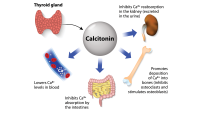Your prompt action on the scene aids quick recovery.
Takeaways:
- School-age children frequently skip meals or have poor nutrition that may lead to adverse events.
- Primary and secondary pediatric assessment provides guidance for nursing actions in pediatric patients.
- Rapid assessment and intervention in pediatric patients can be life-saving.
While watching a children’s softball game on a sunny 88° F day, you see one of the players, Mia Smith*, suddenly collapse. Mia’s mother runs to her child’s side, and you and the coach quickly follow. You gently shake the 8-year-old’s shoulders asking, “Are you okay?” You palpate for a pulse and inspect her breathing. Mia’s eyes are open, her pulse is present, and she’s breathing. Her skin is warm, pale, and diaphoretic, and she appears lethargic.
Assessment and interventions
You begin by assessing Mia’s orientation. When you ask her name, she responds correctly. You follow with the initial American Heart Association (AHA) Basic Life Support assessment (Circulation, Airway, and Breathing). Because Mia is conscious, her chest is rising bilaterally, and her brachial pulse is present, you don’t call 911 or request an automatic electrical defibrillator. You then perform the AHA Pediatric Advanced Life Support (PALS) primary ABCDE (Airway, Breathing, Circulation, Defibrillate, Evaluate) assessment. You note that Mia’s respiration rate (RR) is 22 breaths per minute, her capillary refill is <2 seconds, and her heart rate is 130 beats per minute (bpm). Mia is oriented to self and reports morning nausea. Also, she’s moving her extremities, and you observe no obvious trauma.
Next, you perform the PALS secondary assessment, again checking signs and symptoms and asking Mia’s mother about allergies (none), medications (none), medical history (no known medical conditions), last meal (7:00 pm the previous evening), and exposure (nausea without vomiting, heat exposure during the softball game, no fever).
When you ask Mia if she was hit by something, she says no. Mrs. Smith states that Mia hasn’t been feeling well the past few days and hasn’t been eating or drinking much. She adds that Mia reported feeling like she was going to throw up before leaving home. Because she didn’t have a fever and really wanted to play in the championship game, Mrs. Smith chose not to keep her home. When you ask Mia what happened before she collapsed, she says, “I just got dizzy and felt weak. I don’t remember after that.” You ask if anyone has a glucometer. The coach, who has diabetes, does. Mia’s glucose level is 30 mg/dL, which indicates hypoglycemia. You help Mia sit up and give her peanut butter and crackers, a piece of hard candy, and fluids with electrolytes. Within minutes Mia starts feeling better and Mrs. Smith and the coach take her to rest in the shade of the dugout. You encourage Mia to drink more fluids and continue resting.
Outcome
While awake, normal HR for school-age children ranges from 60 to 100 bpm and RR ranges from 14 to 26 breaths per minute. Normal glucose levels are 60 to 100 mg/dL.
Rapid assessments and interventions improve outcomes. If Mia had remained unconscious, if her breathing or pulse were absent, if she had a seizure, or if her mother reported that her daughter had a heart condition, you would have called 911. Children with fever, diarrhea, or vomiting can become dehydrated quickly and possibly lose consciousness. Playing in hot temperatures without adequate hydration or nutrition may have contributed to Mia’s collapse. If Mia had been unconscious or confused, you would have administered non-oral route glucose to avoid aspiration.
You recommend that Mrs. Smith take Mia to see her pediatrician. Your quick action helped Mia make an immediate recovery, and your recommendation will ensure she receives adequate follow-up care.
*Name is fictitious.
Lisa Wallace is an assistant professor at Morehead State University in Morehead, Kentucky.
References
American Heart Association. Basic Life Support.
American Heart Association and American Academy of Pediatrics. (2020). Pediatric Advanced Cardiac Life Support.
Ricci S, Kyle T, Carman S. Maternity and Pediatric Nursing. 4th ed. Philadelphia, PA: Wolters Kluwer; 2020.


















